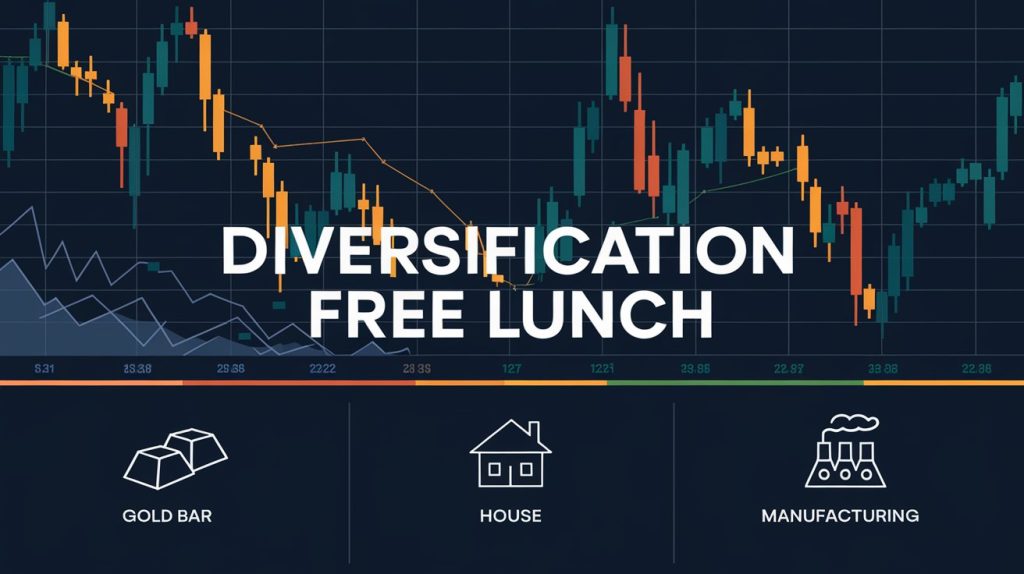
It’s easy to let a portfolio drift. Stocks rise, bonds fall, and before you know it, your carefully planned allocation quietly morphs into something riskier than you ever intended. Most investors don’t notice until the next bear market hits.This is where William Bernstein’s 5/25 Rule steps in. it is a remarkably simple framework designed to protect you from your own instincts. It builds behavioral discipline. And if you follow it, you’ll make fewer mistakes and compound your wealth more steadily.
Who Is William Bernstein and Why Should You Listen to Him
Before we look into the rule, it’s worth understanding the man behind it. William Bernstein is a neurologist turned financial theorist. He is the author of The Four Pillars of Investing and one of the most respected thinkers on portfolio design. Bernstein’s ideas have one common thread: they simplify complex investing behavior into systems that remove emotion from decision-making. The 5/25 Rule is one of his most powerful behavioral safeguards.
The Core Idea Behind the 5/25 Rule
At its heart, the 5/25 Rule tells you when to rebalance.
Rule summary: Rebalance when an asset class drifts more than 5 percentage points (absolute) or 25% of its target allocation (relative), whichever is greater.
For example, if your target allocation to bonds is 20%, you rebalance if it rises to 25% (a 5-point move) or falls to 15% (a 25% relative move). Simple as it sounds, this rule builds an automatic circuit breaker into your portfolio, keeping you rational when markets aren’t.
Why the Rule Works?
We have earlier discussed why rebalancing is important. We talked about how it helps manage risk and we also discussed the rebalancing bonus you will benefit from if you adopt this simple practice. However, one key question remains: when should you rebalance?
Most investors either rebalance too often or not at all. The 5/25 Rule strikes a balance between precision and practicality.
It prevents overtrading by ignoring small fluctuations. It prevents complacency by forcing action when drift becomes meaningful. And it’s tuned to typical asset volatility, making it both data-driven and human-friendly.
In other words, it keeps your portfolio aligned without turning you into a market timer. And once you have done the rebalancing a few times and seen the benefits first hand, it helps you get over the emotional barrier that prevents you from selling high and buying low.
5/25 vs. Annual or Quarterly Rebalancing
Calendar-based rebalancing is mechanical but blind. It triggers trades regardless of market conditions. Bernstein’s rule is adaptive. When markets are calm, you may not rebalance for years. During volatile periods, you may act multiple times a year.
This flexibility is what makes it efficient. You’re only reacting when portfolio risk meaningfully changes, not just because a date on the calendar tells you to. And as we will see, this also helps you minimize the drag on your portfolio returns due to taxes.
Real-World Example: Applying the Rule in a 60/40 Portfolio
Imagine you start with a 60% stock / 40% bond mix.
Stocks rise 20%, bonds fall 10%, and your allocation drifts to 67/33. Since stocks are 7 points above target, it triggers a rebalance.
You sell a bit of your appreciated equity exposure and buy more bonds. You’ve just sold high and bought low: systematically, without emotion.
I know many investors will question this. They understand that they need to let the winners run and cut the losers quickly. That works when you are trading for quick profits. As long term investors, we have done the research and picked stocks that we are going to stay with for a long time. We will see many cycles of rebalancing as the relative prices change in our portfolio.
This is how the rule quietly compounds returns and reduces volatility over time.
Connection to Kelly Criterion and Shannon’s Demon
The Kelly formula maximizes long-term growth by keeping your capital allocation close to its optimal fraction. Shannon’s Demon shows how disciplined rebalancing between volatile assets can generate excess returns even if neither asset grows on average.
The 5/25 Rule is a practical bridge between these theories: A simple, human-friendly implementation of growth-optimal principles.
It gives you the trigger to rebalance and harvest the volatility (Shannon’s Demon). In doing so, you bring your portfolio back to the Kelly formula specified allocation which will allow you to maximize your long term portfolio growth.
Protecting You from Yourself: The Behavioral Edge
Rebalancing is a discipline. The 5/25 Rule enforces rationality when your instincts scream otherwise. When markets soar, it makes you take profits. When they crash, it forces you to buy what everyone else is running away from.
You will start making contrarian bets, albeit in small increments.
Over time, this simple system protects you from the most dangerous investor you’ll ever meet: yourself.
How to Use the 5/25 Rule in Different Portfolio Types
We run the small cap value portfolio in the Inner Circle but I do manage other portfolios that follow different strategies. You probably do the same. So here is my advice.
ETF and Index Portfolios: Perfect for set-it-and-forget-it investors using broad market exposure. This could be your Permanent Portfolio or 60/40 portfolio.
Income Factory Portfolios: Helps manage overexposure to high-yield or leveraged assets that can drift quickly. This is specially true if you own leveraged CEFs or one of those Roundhill Weeklypay ETFs.
Small-Cap Value or Factor Portfolios: Keeps allocations balanced when individual positions swing wildly. Small cap stocks tend to be very volatile and will give you ample opportunities to rebalance. Factors can be cyclical and can introduce large drifts over time.
Regardless of portfolio type, the 5/25 Rule keeps the math honest and the emotions out.
When to Override the Rule
There are rare times to bend, not break, the rule:
- When valuation changes are fundamental, not price-driven. Changes in fundamentals will cause a reset in the prices.
- When tax or transaction costs outweigh the benefit of rebalancing. For taxable accounts this can be a real concern, particularly when you are dealing with highly appreciated stocks.
- When expected returns have structurally changed due to new information. Again, this could be a fundamental change, or it could be a larger economic shift.
Otherwise, consistency wins. Investors who follow a system beat those who rely on gut instinct.
Final Thoughts: The Wisdom of Simple Systems
The genius of the William Bernstein 5/25 Rule is that it eliminates two of the biggest enemies of compounding: emotion and drift. Rebalancing isn’t glamorous. But it’s what keeps your portfolio aligned with your goals when markets and emotions pull you away.
I like the 5/25 rule as it simplifies your decision making and helps you ignore the market. Better, it forces you to bet against the market as the market goes through its swings, and in this way gives you opportunities to benefit from the rebalancing bonus in a structured way.

Shailesh Kumar, MBA is the founder of Astute Investor’s Calculus, where he shares high-conviction small-cap value ideas, stock reports, and investing strategies.
His work has been featured in the New York Times and profiled on Wikipedia. He previously ran Value Stock Guide, one of the earliest value investing platforms online.
Subscribe to the Inner Circle to access premium stock reports and strategy insights.
Featured in:








